It's Persimmons Season! 7 Healthy Winter Fruits to Stock up on Before They're Gone
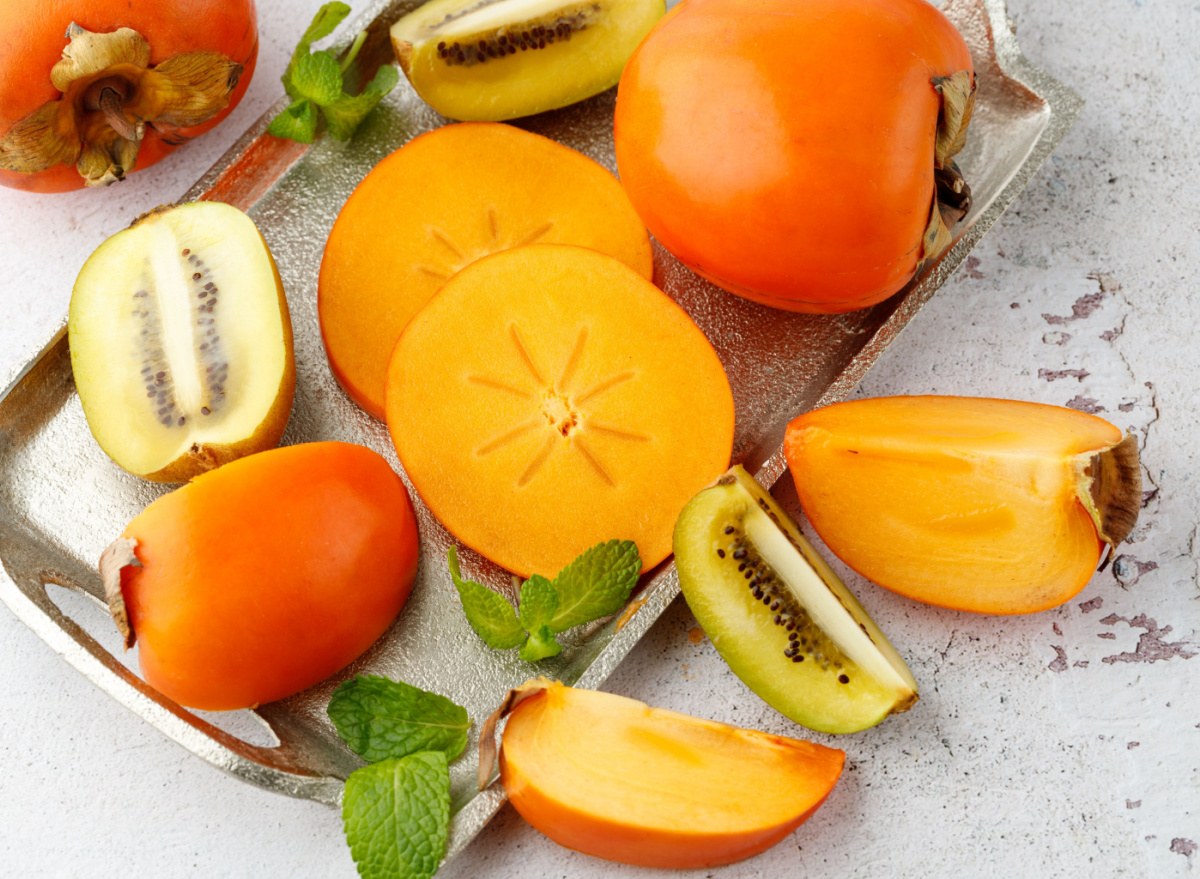
The cold and often dreary winter months have a bright side if you look for it—the in-season fresh fruits that are often on sale this time of year!
Sure, your summer may be overflowing with fresh berries and fruit salads, but if you look closely, you'll see a huge variety of fruit that's freshest in winter. Not only does winter produce taste the best when eaten in season, but some winter fruit, like persimmons, may only be available at your grocery store for a few months out of the year.
While some faraway lands may grow some of these fruits throughout the year, long shipping times often mean low-quality and expensive fruit when eaten out of season.
Snacking on fruit can help support your immune system, increase your fiber intake, and load your body with disease-fighting antioxidants when it comes to staying healthy this winter.
Here are 7 healthy winter fruits to enjoy before they're out of season.
Persimmons
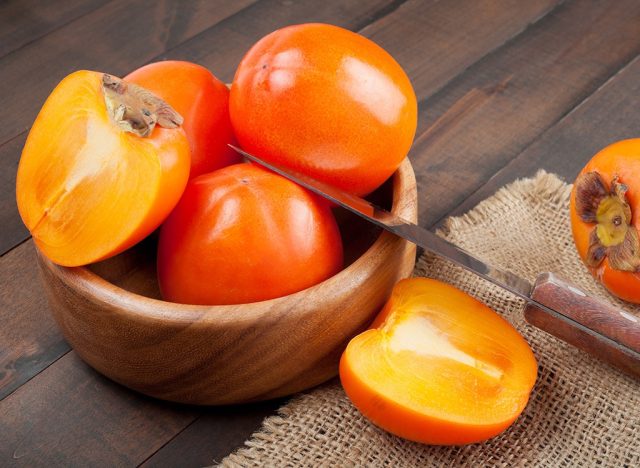
This fruit is native to China but is now grown in several places throughout the world, with a small harvest in California each winter. You'll find an abundance of it on the west coast and in the "exotic fruit" section of the supermarket everywhere else in the United States from October to December.
One Persimmon fruit (without the skin) has only 31 calories and 18% of your daily value of vitamin C, making it a top winter superfood. If you bite into unripe persimmons, you'll be met with an unpleasant and bitter taste, but when ripe, they're sweet and almost jelly-like in texture.
Pears
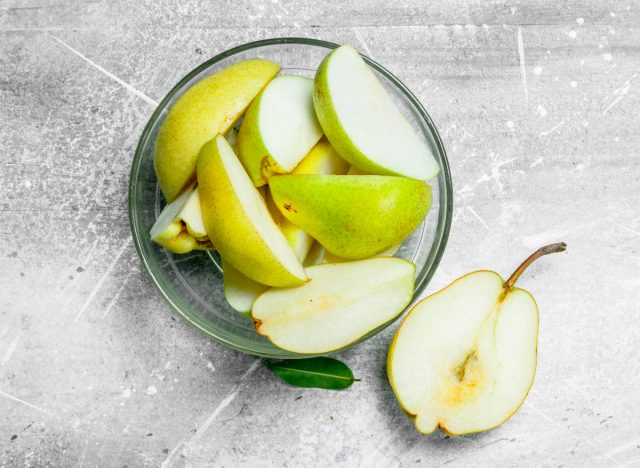
Anjou and Bartlett pears are the most common types found in supermarkets year round, but several varieties of pears are only in season from October to February. Pears are great for your heart and gut health, with one medium pear packing 5.5 grams of fiber. The 2020-2025 Dietary Guidelines for Americans recommend 14 grams of fiber for every 1,000 calories eaten. Pears pack 20% of the recommended amount of fiber in a 2,000-calorie diet.
Grapefruit
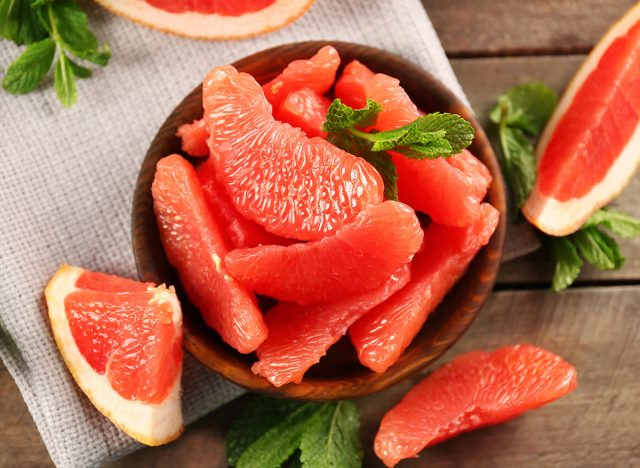
This sweet, tangy, juicy fruit is grown in California and Texas, but the largest producer in the United States is Florida. Its peak season is late fall to early spring. While many people enjoy this fruit raw (sometimes with a spoonful of sugar on top), you can grill, broil, and juice grapefruit to enjoy in a variety of dishes.
One medium grapefruit has 98% of the daily value for vitamin C and 79% of your daily value for vitamin A. Even though this winter fruit is highly nutritious, beware of the side effects of grapefruit and its juice if you take blood-thinning medication.
Cranberries
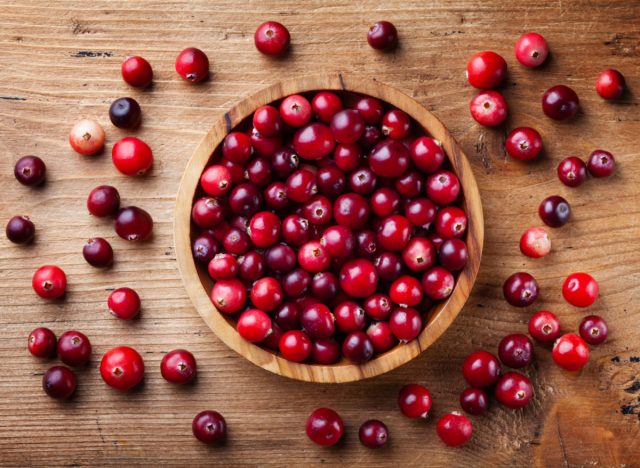
Cranberries bring visions of Thanksgiving dinners and Christmas garland for good reason, its season lasts from October through December, making it the perfect holiday fruit.
These berries have a reputation for helping prevent urinary tract infections (UTIs). Several clinical studies have found that drinking cranberry juice or taking cranberry supplements leads to a reduction in UTI frequency among adult women who suffer from frequent UTIs. But, many studies have also found little correlation between the two.
Oranges
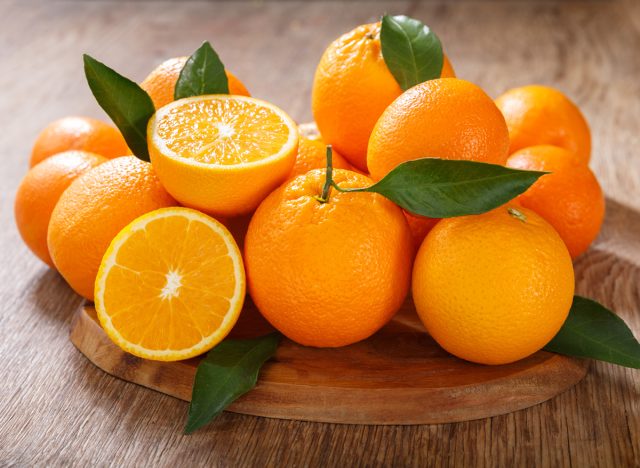
Sure, you'll find oranges at the supermarket all year long, but nothing beats the fresh sweet taste of oranges during the winter months when the season is at its peak. Oranges, clementines, and tangerines are all the sweetest and are typically on sale in the winter.
Oranges get most of their fame for providing over 100% of your daily needs for vitamin C, but that's not all they're good for. The flavonoid hesperidin found in oranges has blood-pressure lowering and anti-inflammatory effects. A July 2020 study in the European Journal of Nutrition found that drinking two cups of orange juice daily for 12 weeks lowered systolic blood pressure and pulse pressure in people with pre- and stage-1 high blood pressure.
Kiwi
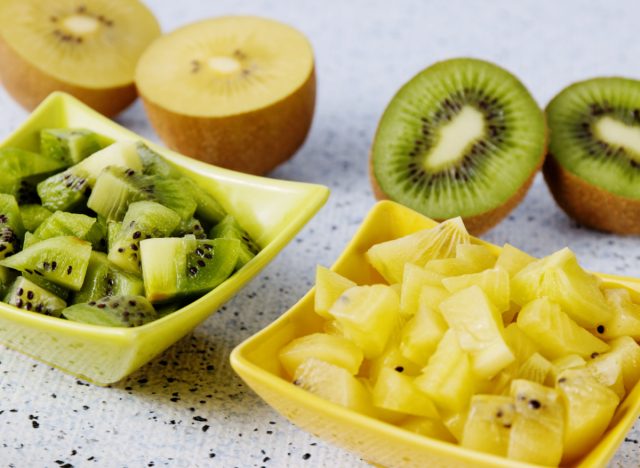
This tiny green fruit has a deceiving appearance—who would guess that under the hairy brown skin lies a deliciously sweet and juicy fruit packed full of nutrients like vitamin C, fiber, and vitamin K. Kiwi season is from fall through early spring in the United States, although thanks to cold storage, you can typically find kiwi all year round in supermarkets.
While most people think of oranges as the fruit highest in vitamin C, kiwi has them beat, specifically gold kiwi. Weight for weight, gold kiwi has three times the vitamin C than oranges. Just two small SunGold kiwi fruits have 287% of your daily value for vitamin C. An October 2012 clinical trial in the British Journal of Nutrition found that eating four gold kiwis per day for four weeks reduced the severity and duration of upper respiratory infections in a small group of older adults.
Pomegranates
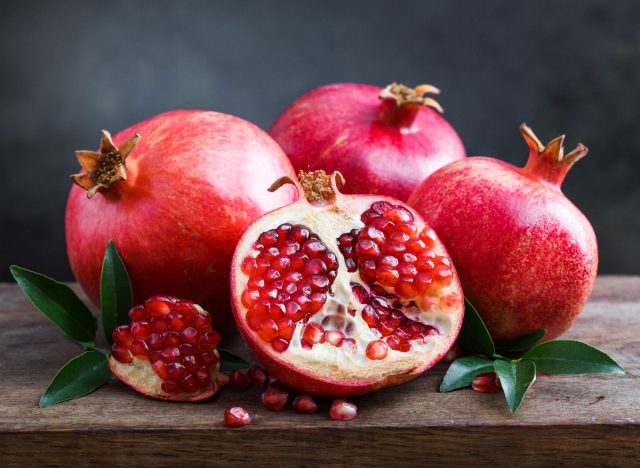
About 90% of pomegranates grown in the United States come from California, thanks to the warm and dry climate. Its main season runs from October to January, making this a popular winter fruit. Once you peel away the tough outer shell, you'll find an abundance of juicy red arils loaded with sweet flavor and antioxidants.
Researchers have found that the antioxidant potential of pomegranate juice is higher than red wine or green tea, two drinks prized for their potent antioxidant content. One small clinical study found that drinking concentrated pomegranate juice daily for eight weeks significantly decreased total cholesterol and LDL-cholesterol levels in people with type two diabetes and high cholesterol.









